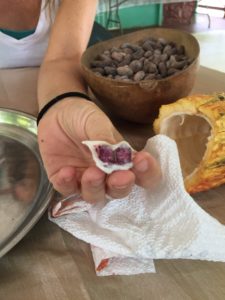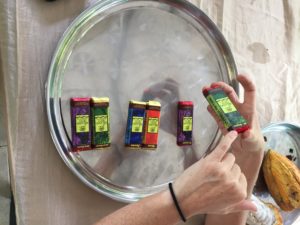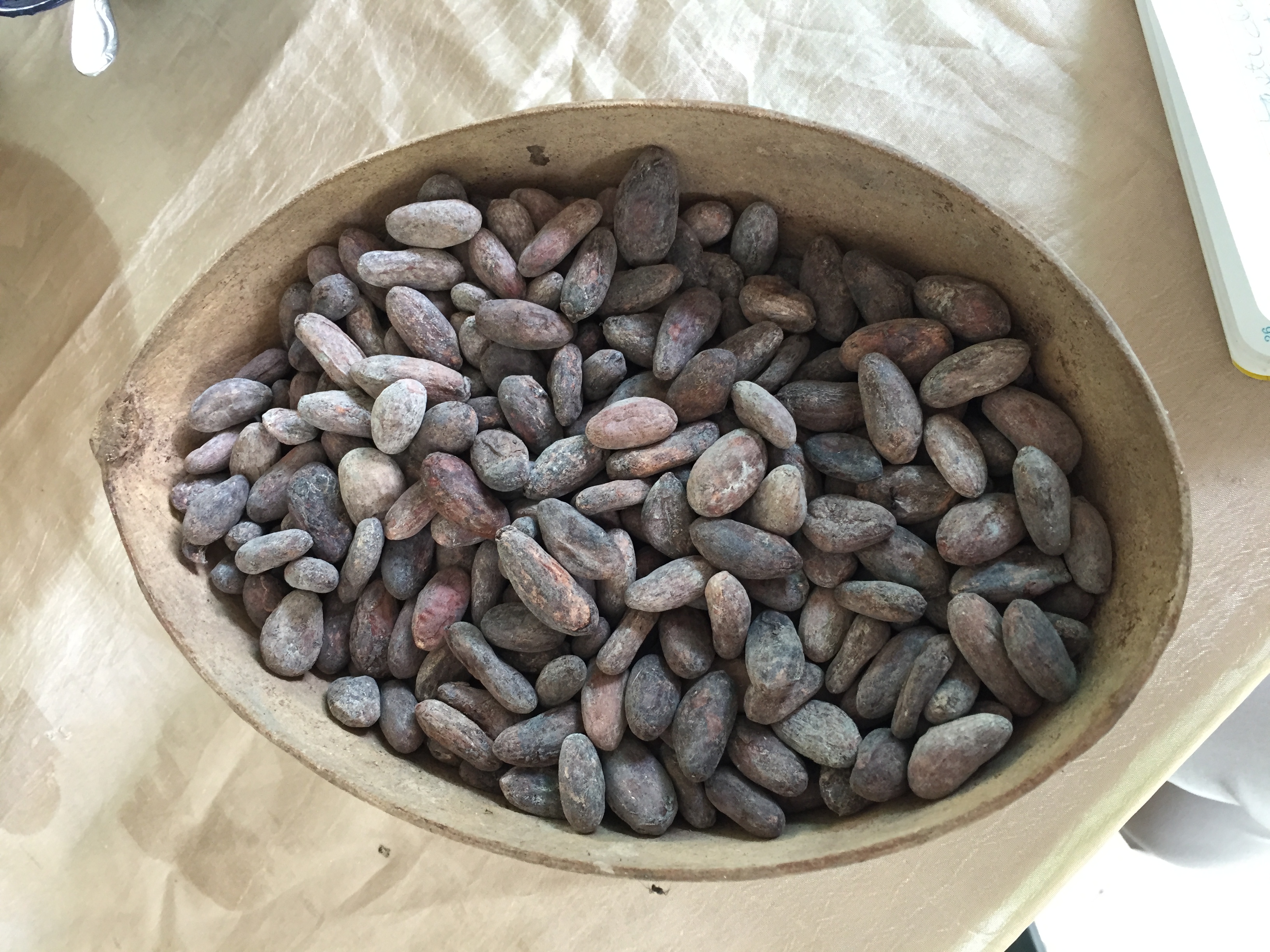We came to the Asa Wright Nature Centre for the birds, but little did we know we were in for a sweet treat — a chocolate making demonstration!
A guest blog post by Kimberly Vetter.

Do you like chocolate? I know I do and was pleasantly surprised when I learned I would be visiting a bona fide cacao farm during my stay at Asa Wright Nature Center in Trinidad for a chocolate making demonstration. (A special treat, this agro-tour is a regular feature on Caligo Venture’s all-day Blanchisseuse Road field trip in the Northern Range.) Although the island country has been growing cacao for more than 100 years, it was only recently that local growers started making actual chocolate.

Prior to 2011, the Trinidadian government mandated that all cacao be sold to the government for exportation to other countries such as Europe, a place known for the sweet treat. Once that law was changed, local growers dove into the chocolate making business and are making a mark for themselves in the artisanal chocolate world.
Brasso Seco Paria, the community-based cacao farm I visited, started making chocolate products about a year ago and graciously showed our group how it’s done:
Step 1: Pick the large yellowish pod from the cacao tree.
Step 2: Open up the pod and remove the beans along with the gelatinous material covering it (you can suck on the fleshy material like candy if you can handle its sweet and sour taste).

Step 3: Let the beans and their covering ferment for a week in a box covered with banana leaves.
Step 4: Sun dry the beans for about 24 hours.
Step 5: Remove the cacao husks in a grinder.
Step 6: Press the husked beans to separate the oil from the cacao powder.
Step 7: Combine cocoa butter, cocoa powder, and sugar and mix for about 24 hours.
Step 8: Temper the chocolate to form as a solid.
Step 9: Sell or eat!

Whew! Who knew making chocolate was so involved? I didn’t and definitely have a new appreciation for the delicious treat. Brasso Seco Paria makesvarious types of chocolate and cacao products, including cacao bits, cocoa butter, and cocoa powder. All of which I sampled and were DELICIOUS! Check out the farm and the tourism action committee it’s involved with, as well as the other local businesses and services offered to locals and tourists alike. It really doesn’t get any better than chocolate.

